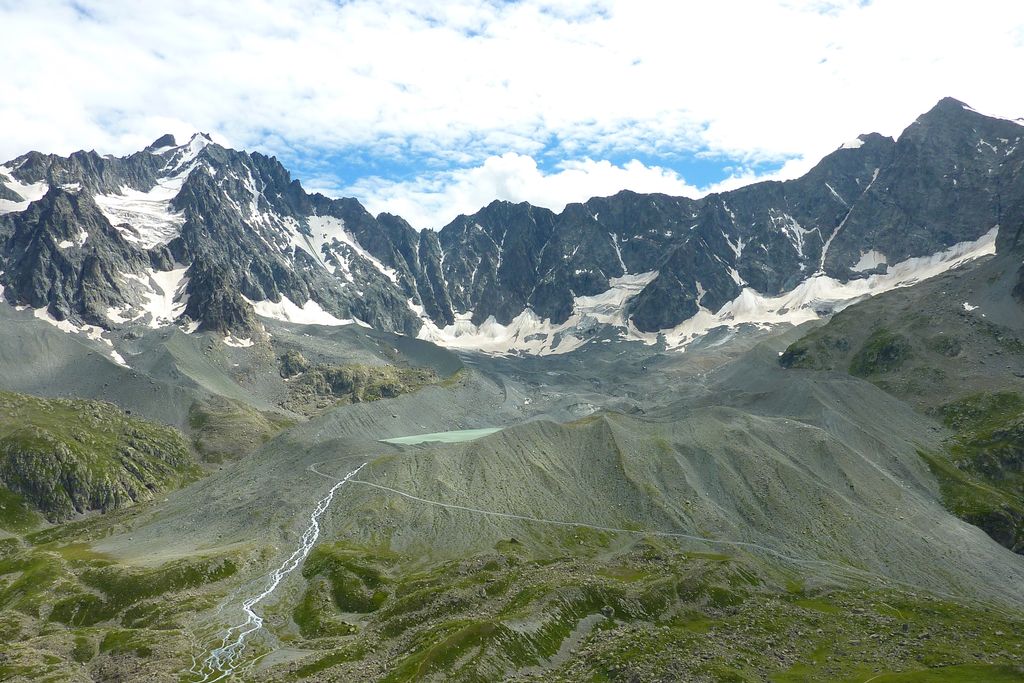
The Arsine corrie via the Crevasses path
Early in the morning, the rising sun lights up the glacier outlines of the Ecrins peaks, while the sheep are resting in the immense Alpine pastures that begin near the Col du Lautaret. A day’s walk awaits us for a gradual introduction to summits where some of the finest hours of mountain climbing have taken place, in the highest range in the southern Alps. After the efforts of a long, but gradual ascent, the Arsine glacier corrie topped by majestic summits are an awe-inspiring reward (Pic des Agneaux and Pic de Neige Cordier).
Pierrick Navizet, responsible for the eco-tourism project at the National Park
Description
From the car park below the Col du Lautaret, make your way up and you will soon arrive at a crossroads. Take the right-hand fork and leave the Laurichard path. Cross a footbridge and walk up the hillside. The path crosses several streams and areas of bushes leading to a more open space where it arrives at the Belvedere de L'Homme. Soon after, go through (and then close) a barrier before going down the sometimes uneven schist slopes of a path called Les Crevasses, with some care to be taken in wet weather on the slippery terrain. You arrive at the Villar d'Arène mountain pasture and cross the GR 54 near the weather station. Soon afterwards, leave the path leading to the refuge on the right and continue up the Rif de la Planche valley to arrive at the Col d'Arsine along the GR 54. You then leave the GR 54, and turn right to cross the large frontal moraine of the Arsine glacier. From this rise shaped by the movement of glaciers, two large lakes at the foot of a corrie mark the end of the ascent (2,455 m). Take the same route to return to the car park where the trail started. On the way back, you can opt for a variation via the Alpe de Villar d’Arène refuge.
- Departure : Col du Lautaret
- Towns crossed : Villar-d'Arêne and Le Monêtier-les-Bains
17 points of interest
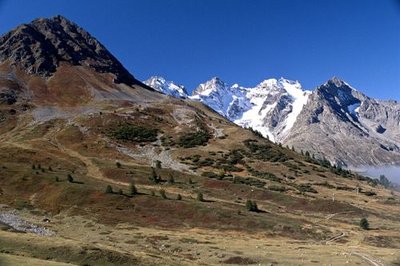
Avant le démantelement des téléskis - Eric Vannard - PNE  History
HistoryDismantled ski-lifts
A small ski resort was created in 1970 not far from the Lautaret mountain pass. Due to the risk of avalanches and new standards required, alpine skiing was moved near to the village of Villar d'Arène and Chazelet hamlet. The two obsolete ski-lifts situated in this very picturesque territory, rich in terms of biodiversity, ruin this place which has been classified since1974 as the national nature reserve of Combeynot. In 2013, dismantling was carried out by the Mixed union of ski-resorts in the Haute Romanche with the support of the National Park. In the end more than 35 tons of iron and concrete blocks were evacuated.
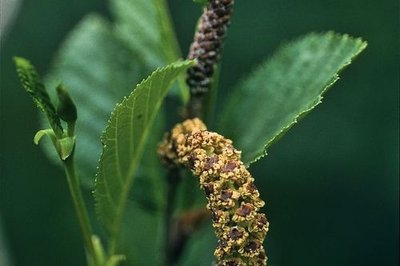
Chaton mâle et chaton femelle de l'aulne vert - Bernard Nicollet - PNE  Flora
FloraAlder forest and green alders
Here is a spectacular transition from the genuine forest and pastures of the north facing slopes. There is a thick grouping of shrubs made up essentially of willows and green alders. These will never reach the size of a tree. They constitute impenetrable thickets where, over time, boars, chamois and roe deer have outlined a maze to hide in. The plants provide nitrogen through their roots and fertilise the soil, as if getting their own back on the eutrophic tall herbs.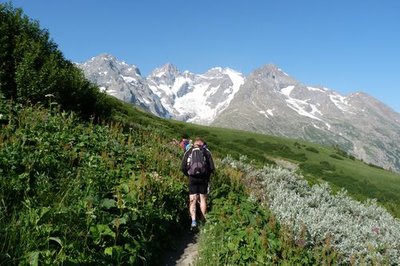
Le sentier traverse la megaphorbiaie. - Pierrick Navizet - Parc national des Ecrins  FloraTransition zone at the upper edge of the forest, it has large plants with big leaves that seek light in order to grow. Under cover of their leaves, some animals and plants find a safe haven, particularly alternate-leaved golden saxifrage and adenostyles alpina. On the east part of the Ecrins massif, eutrophic tall herbs can be found at the edge of streams and brooks. Just after snowmelt, it raises its golden head and constitutes a lovely carpet of flowers.
FloraTransition zone at the upper edge of the forest, it has large plants with big leaves that seek light in order to grow. Under cover of their leaves, some animals and plants find a safe haven, particularly alternate-leaved golden saxifrage and adenostyles alpina. On the east part of the Ecrins massif, eutrophic tall herbs can be found at the edge of streams and brooks. Just after snowmelt, it raises its golden head and constitutes a lovely carpet of flowers.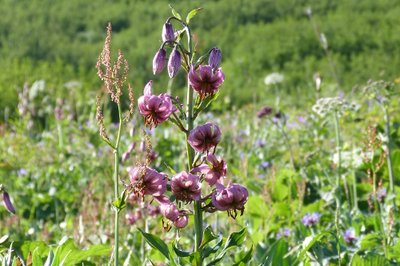
Le lys martagon - Pierrick Navizet - Parc national des Ecrins  Flora
FloraTurk's cap lily
The Turk's cap lily lodges on the grassy slopes, meadows and undergrowth. It can be seen from a distance due to it long upright flowering stalk from which stem three to ten majestic flowers. They are large, purple-pink with some crimson, and have six petals that turn upwards when they reach maturity. Six orange stamens are then visible. The flowers that bend downwards lift when the fruit is formed.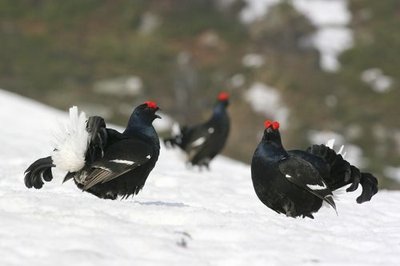
Parade de Tétrs Lyre au printemps - Robert Chevalier - Parc national des Ecrins  Fauna
FaunaBlack Grouse
The black grouse lives above 1200 m, and can only be found in the Alps. It is possible to spot the male due to its black plumage and its tail in the shape of a lyre (which is why its French name is Tétras Lyre). While it spends most of the time in winter in an igloo scooped out of the snow as protection against the cold, in the spring it performs spectacular parades to attract a female. The National park is tracking the population of the species in this zone.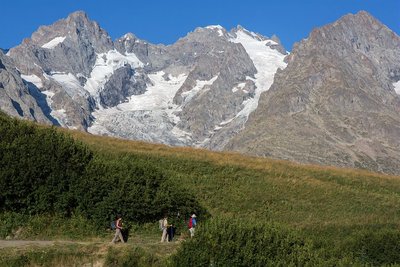
Vue sur la Meije depuis le sentier des Crevasses - © Parc national des Écrins - Pascal Saulay  Glacier
GlacierView over La Meije
La Meije is the second major peak in the Massif des Ecrins. It is made up of 3 main peaks: the Doigt de Dieu (3,973 m), La Meije Orientale (3,891m), and the highest summit, the Grand Pic at 3,983 m. It is a hard summit to climb, and the first to do so, on 16 August 1877, was Emmanuel Boileau de Castelnau, together with the famous local guide, Pierre Gaspard. "Meije" comes from the Occitan word Meidjo, which means midday, because when seen from the village of La Grave, the sun passes above the summit at around noon. On the other side, before La Meije became famous, it was called the Bec des Peignes (“Comb Beak”) by the inhabitants of Saint-Christophe-en-Oisans.
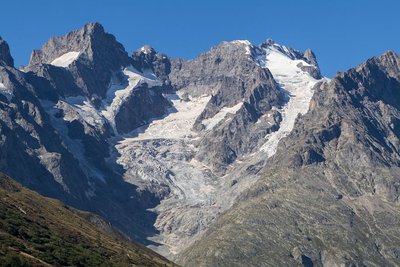
Vue sur le glacier du Lautaret et de l'Homme depuis le belvédère de l'homme - © Parc national des Écrins - Cyril Coursier  Panorama
PanoramaBelvedere de l'homme
A wooden guardrail is set up at the ideal spot for contemplating the descending glaciers of La Meije. The Lautaret glacier to the left and the Glacier de l’Homme to the right scarcely meet today. The last-named glacier is the descending ski slope from the Pic Oriental of La Meije and from the Aigle refuge (to be seen if you continue along the path towards the Rocher Blanc). The refuge is perched at an altitude of 3,450 m on a rocky spur. A new refuge was opened in 2014, preserving an existing wooden structure that dated from 1910.
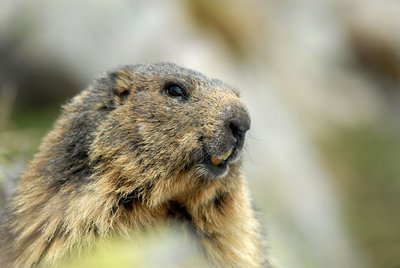
Marmotte au printemps - PNE - Papet Rodolphe  Fauna
FaunaThe marmots’ "bosse"
The alpine marmot is naturally present on grass at altitude. Here, it occupies a singular place which we call the marmots’ "bosse». This hibernating rodent is only visible between April and October. The marmot lives in a family and respects a hierarchy. Games, grooming, fighting and biting ensure the dominance of a couple as well as the cohesion of the group. Each animal participates in the delimitation of the territory by rubbing its cheeks on rocks and also by urinating and defecating there. When there is danger, the marmot emits a high and powerful whistle in order to warn the others.
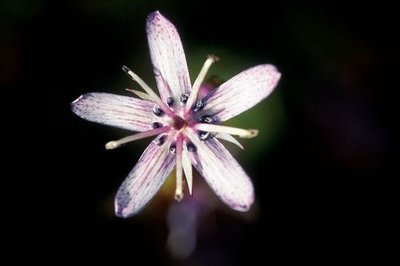
Swertie vivace - Bernard Nicollet - PNE  Flora
FloraFelwort
In early August, the felwort’s violet stars open in the sunshine. At the base of each of its five petals, two shiny pits full of nectar attract insects. A member of the gentian family, this beautiful flower is a perennial that survives the cold season with its persistent winter bud close to the ground, surrounded by a rosette of protecting leaves.
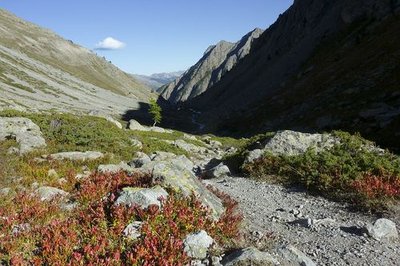
En descendant du col d'Arsine, sous les chalets du même nom. Vue plein est. - Cyril Coursier - PNE  Pass
PassArsine pass
The Arsine pass, is an important crossing point to visit on the GR54 Tour des Ecrins et de l'Oisans. It gives a remarkable viewpoint over the Angeaux massif. The pass is part of an old itinerary that was used instead of the crossing point by the Lautaret pass. It is also a crossing point between the Guisane and the Romanche area. This is an area that was mentioned as early as the Middle Ages as a place of conflict between the districts of Villar d'Arène and Monétier-les-Bains.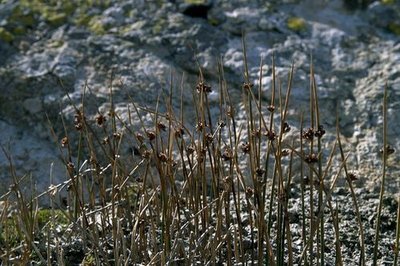
Jonc arctique - Bernard Nicollet - PNE  Flora
FloraArctic rush
Even though it is relatively common in some acidic marshland, the Arctic rush is nonetheless protected throughout the Rhône-Alpes and Provence-Alpes-Côte-d’Azur regions. It can be recognised because of its total absence of leaves and by the few blackish flowers in the upper third of the stalk. The flower tepals open at an obtuse angle and are a little shorter than the capsule.
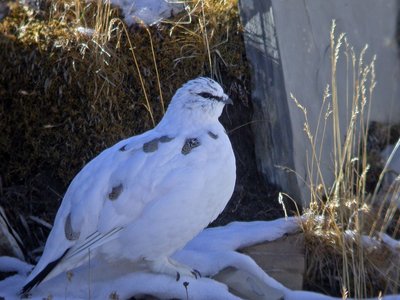
Le lagopède alpin en plumage d'hiver - PNE - Combrisson Damien  Fauna
FaunaRock ptarmigan
At five in the morning in the month of May, at an altitude of over 2,000 m, the sun rises over the fields of blueberry, which appear above the patches of snow. All of a sudden, a hoarse, almost metallic cry cuts through the peaceful dawn atmosphere: the rock ptarmigan is in the midst of its nuptial parade. Originating from the Arctic tundra, the rock ptarmigan, sometimes called the snow partridge, was to be found all over Europe during the ice ages, before its living space was limited to the mountains. Even today, it finds the conditions it needs to survive. The national Alpine parks have a great responsibility in conserving this species. The inventory carried out by the Haute-Romanche nature unit in 2005 showed there was a large core group of birds on the site.
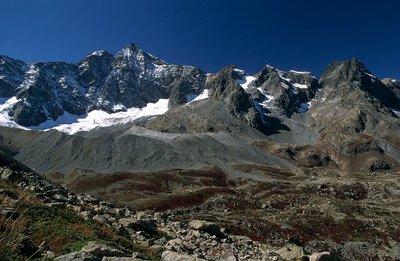
Anciennes moraines colonisées - PNE - Nicollet Bernard  Glacier
GlacierMoraines
The site of Arsine offers a complex moraine environment with a parade of ice margin flowers. The frontal moraine of the Arsine glacier is on a glacial vegetated rock complex that occupies about forty hectares at the bottom of the cirque. This complex is likely to have come about through a shifting of abandoned glacial deposits after permafrost was established. This means that the ground maintains a temperature of 0°C or less over several years. This phenomenon is likely to have taken place during the recent Dryas climatic cooling, that is to say 11 000 – 10 000 years BC.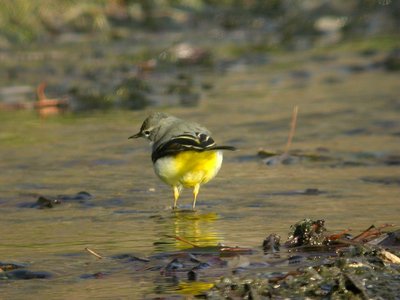
Bergeronnette des ruisseaux - PNE - Combrisson Damien  Fauna
FaunaAquatic diet
The grey wagtail is "hyperactive" and has a diet of flies, mosquitoes, dragonflies and all sorts of aquatic insect larvae. It hunts at the edge of the water, by jumping from stone to stone or hovers to catch its prey. It sometimes fishes for shellfish, molluscs, or even small fish to complete it meals. It does not leave the damp banks to build its nest either, and even looks for somewhere close to a waterfall or to flowing river.
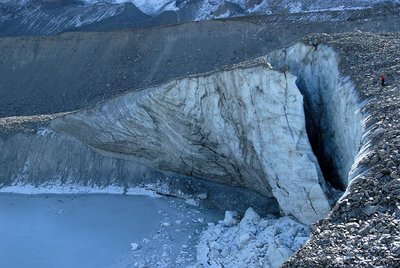
Détachement imminent d'un bloc du glacier - PNE - Masclaux Pierre  Glacier
GlacierIce calving
When the lake is frozen and the air temperature rises, the ice expands, provoking what is called the “song of the lake". The Lac Ouest is the last lake in the mountain range where it is still possible to see the fall of seracs (the front of the glacier) into the water, giving rise to this muffled noise.

 Glacier
GlacierThe melting Arsine glacier
Lake Arsine came to life in the 1950s after the Arsine glacier melted. Due to its rapid development, it was measured more accurately in 1969 and 1985, showing 800,000 m3 of water contained in a moraine that had been weakened by the ice inside it. Since it threatened to break, emergency work was undertaken the following spring to stop the rise in the level of the lake using a regulation channel dug across the frontal moraine. Almost 30 years later, the glacier site is still carefully monitored by Park employees. And the risk is now completely ruled out.
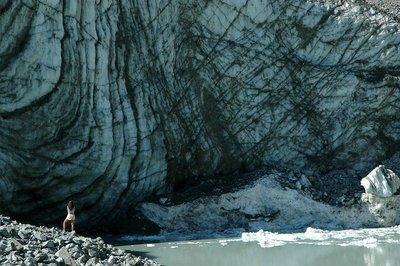
Le lac et le glacier d'Arsine - PNE - Masclaux Pierre  Lake
LakeArsine Glacier
The Arsine glacier is contained in the hollow of a vast corrie facing north, encircled by high walls reaching an altitude of between 3,200 and 3,600 metres. This is a glacier that is mostly hidden, with the front, currently at an altitude of about 2,470 m, behind lakes. The lakes are held back by an impressive series of old moraines, formed during the Little Ice Age (between about 1550 and 1850). Due to its size and preserved state, the old moraines of Arsine are an exception in the western Alps. Usually such morainic fronts are found in small, high-altitude glaciers, resulting water running too weakly to sweep away the accumulation of pre-glacier deposits (for example, the Réou d’Arsine glacier). The melting and shrinking of the Arsine glacier posed problems in the 1980s concerning water retention and therefore safety. RTM teams carried out work to lower the level of the lakes, the size of which raised fears of a break in the moraine with the risk of flooding the village of Le Casset.
Forecast
Altimetric profile
Information desks
Maison du Parc du Briançonnais
Place Médecin-Général Blanchard, 05100 Briançon
Located at the foot of the medieval town fortified by Vauban, declared World Heritage by UNESCO in 2008, the Maison du Parc Briançon is a welcoming place of information exchange. Three floors of exhibition to discover : the natural and cultural heritage, the museum of the history of skiing in Briançon. Documentation, maps, guidebooks, books and products of the Park. Guided tours for groups by reservation. Free admission.
Transport
Grenoble - Briançon bus line via Col du Lautaret (regional express line: LER 35).
Access and parking
D1091 (Grenoble - Briançon), Col du Lautaret.
Parking :
Source

Report a problem or an error
If you have found an error on this page or if you have noticed any problems during your hike, please report them to us here:


